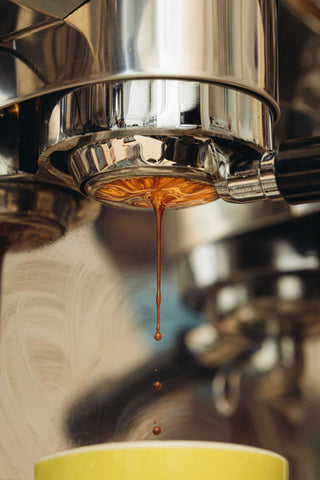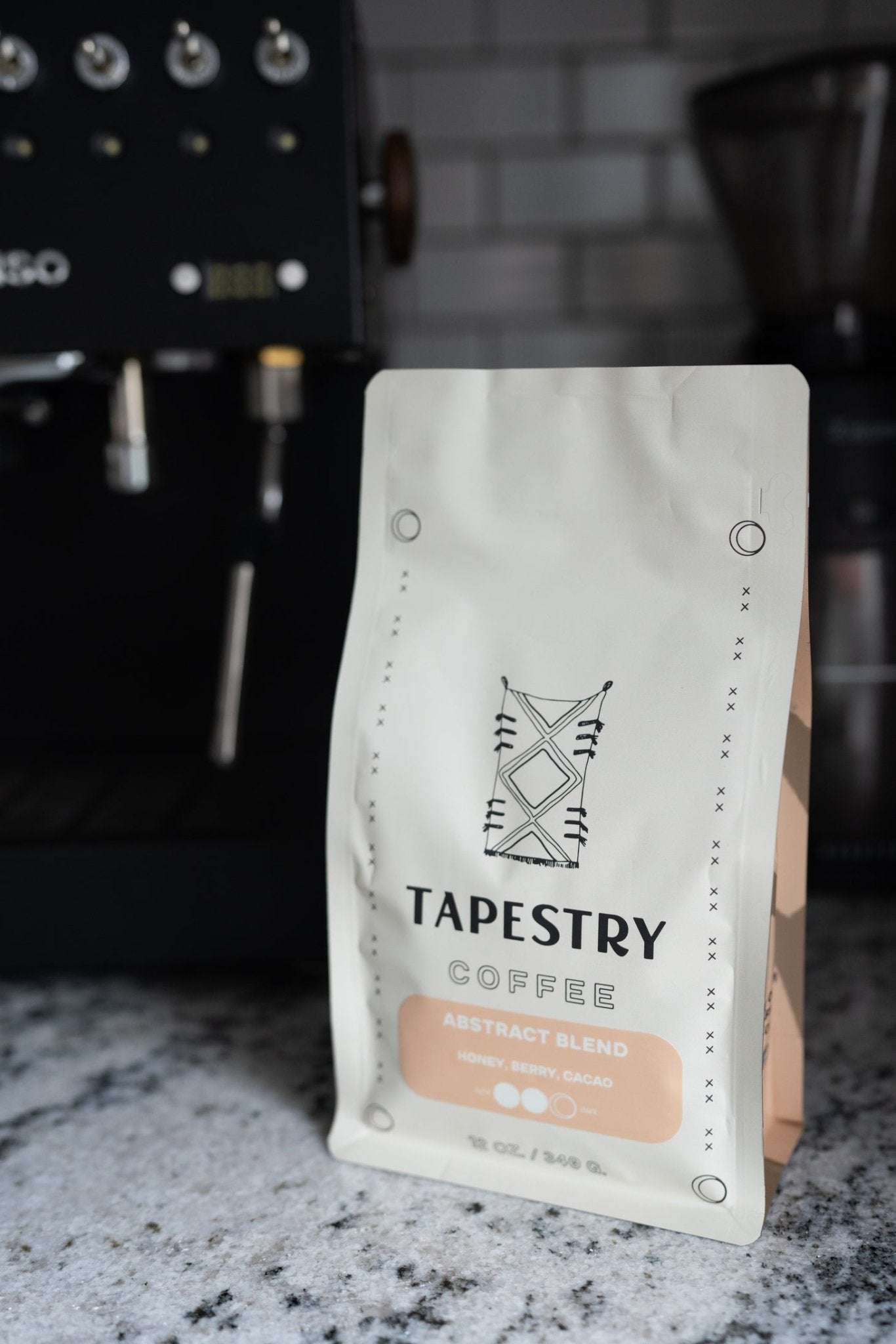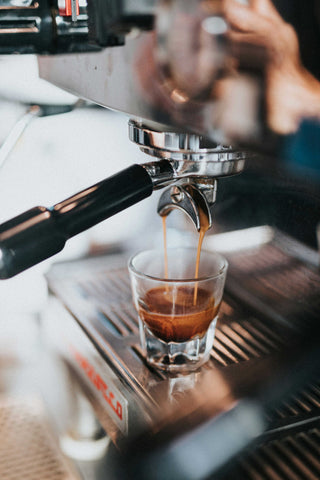Photo by Nathan Dumlao on Unsplash
How can I make my espresso taste better at home?
Elevating the taste of your home-brewed espresso requires a nuanced approach that encompasses various elements. Start by considering the quality of your coffee beans. Opt for freshly roasted beans as they offer a richer flavor profile. The choice between Arabica and Robusta beans depends on your preferences—Arabica beans contribute complex flavors, while Robusta adds strength and a thicker crema.
Factors Contributing to Overall Espresso Taste
The overall taste of an espresso shot is influenced by several factors, including the choice of coffee beans, grind size, brewing time, and water quality. The interplay of these elements determines the flavor profile, ranging from bright and acidic to rich and full-bodied.
Impact of Coffee Freshness on Espresso Flavor
Freshness is paramount. Newly roasted beans undergo a degassing process, and using them too soon or waiting too long can affect the flavor. Proper storage in an airtight container, shielded from light and humidity, is crucial for preserving freshness.
Enhancing Taste Through Brewing Techniques
Experimenting with brewing techniques is key to enhancing flavor. Adjusting grind size and consistency is vital for controlling extraction time. Ensure that your water is clean and filtered, as impurities can alter the taste. Meticulous attention to brewing time—ideally between 20-30 seconds—further refines the flavor profile.
How does the freshness of coffee beans impact the flavor of espresso?
The freshness of coffee beans significantly influences the flavor of your espresso. Newly roasted beans need a degassing period for optimal extraction. Be cautious with bean freshness—too fresh or too stale can impact flavor and crema. Proper storage is vital; use an airtight container, shielded from light, heat, and humidity. Consider the roast profile, favoring medium roasts for a balanced espresso. Purchase smaller quantities of coffee to maintain freshness and store beans away from light and air.
At Tapestry Coffee, we always roast to order to make sure our customers are getting the freshest coffee possible!

Are there specific brewing techniques that can enhance the taste of espresso?
Absolutely, there are specific brewing techniques to enhance the taste of your espresso. Adjusting grind size is crucial for controlling extraction time. Experiment with brewing ratios, starting with a 1:2 coffee-to-water ratio, and explore variations for stronger or milder shots. Ensure even water distribution over the coffee grounds, focusing on proper tamping and leveling. Some machines offer pre-infusion settings, providing better flavor extraction. Overall, meticulous attention to detail in your brewing technique can significantly enhance the taste of your espresso.
What kind of coffee beans are the best to use for espresso?
Selecting the best coffee beans for espresso involves considering different factors.
Choosing the right coffee beans is a fundamental step in crafting the perfect espresso. Several considerations come into play, starting with the distinction between Arabica and Robusta beans.
Influence of Coffee Bean Varieties on Espresso Flavor
Understanding how different coffee bean varieties influence flavor is crucial. Arabica beans, known for their nuanced and complex flavors, are favored by those seeking a sophisticated taste profile. On the other hand, Robusta beans contribute a stronger, more robust flavor with a thicker crema.
Preference for Blends or Single-Origin Beans
The choice between blends and single-origin beans depends on your preference for consistency or distinctive flavor notes. Blends offer a balanced and uniform taste, while single-origin beans showcase unique regional characteristics.
Role of Roast Level in Choosing Beans for Espresso
The roast level plays a significant role in choosing coffee beans for espresso. Light roasts bring out bright acidity, medium roasts offer balance, and dark roasts provide a rich, full-bodied experience. Understanding your roast preferences contributes to finding the best beans for your espresso.
Are there specific grind settings for different types of coffee beans in espresso making?
Grind size is a critical factor that profoundly impacts the espresso extraction process. Finding the right grind settings involves understanding how different factors, including bean origin, influence the extraction.
Impact of Grind Size on Espresso Extraction
Grind size directly affects the extraction process. Finer grinds result in quicker extraction, while coarser grinds slow it down. Achieving the optimal grind size ensures a balanced extraction, preventing over-extraction or under-extraction.
Guidelines for Adjusting Grind Settings Based on Bean Origin
Experimentation is key when adjusting grind settings based on bean origin. Different coffee beans may require specific grind adjustments to achieve the desired extraction time. Bean hardness is a factor, with softer beans often requiring a coarser grind.
Grind Consistency's Impact on Espresso Flavor and Crema
Consistency in grind size is equally important. Using a burr grinder, especially one with flat burrs, ensures a more uniform grind. Consistent grind size contributes to even extraction, resulting in a well-balanced flavor and a creamy, thick crema.
What do you do if your espresso shot goes too fast?
A fast-pulling espresso shot can be disappointing, but identifying the factors causing this issue and making the necessary adjustments can remedy the situation.
Factors Causing Fast Espresso Extraction
Several factors can cause an espresso shot to pull too quickly. A too-coarse grind or insufficient tamping pressure are common culprits. Additionally, issues with water temperature and pressure can influence the extraction speed.
Adjusting Grind Size to Control Espresso Extraction Speed
Adjusting the grind size is a primary method to control the speed of extraction. Experiment with a finer grind to slow down the extraction process. Incremental adjustments allow you to find the right balance and achieve the desired extraction time.
Considering Other Variables in Troubleshooting
While adjusting the grind is crucial, other variables play a role. Check the stability of your espresso machine, ensuring it's functioning optimally. Evaluate the water temperature and pressure to further troubleshoot and achieve consistent results.
What do you do if your espresso shot goes too slow?
A slow-pulling espresso shot can be equally frustrating, but with a systematic approach, you can troubleshoot and address the underlying causes.
Factors Contributing to Slow Espresso Extraction
Identifying factors contributing to slow extraction is essential. An overly fine grind or excessive tamping pressure can impede the flow of water through the coffee grounds. Evaluating these variables is the first step in addressing the issue.
Adjusting Espresso Grind Size to Influence Flow Rate
Modifying the grind size is an effective way to influence the flow rate of espresso. Experiment with a coarser grind to increase the flow and achieve a balanced extraction. Incremental adjustments allow for fine-tuning to avoid compromising flavor.
Techniques for Addressing Slow Espresso Extraction Without Compromising Flavor
Beyond grind adjustments, techniques like evaluating machine pressure, temperature, and ensuring even distribution of coffee grounds in the portafilter contribute to addressing slow extraction without sacrificing flavor. A systematic approach helps maintain a delicate balance.
What steps can I take to adjust the strength of my espresso?
Modifying the strength of your espresso involves a thoughtful exploration of variables such as the coffee-to-water ratio, brewing time, and alternative methods.
Impact of Coffee-to-Water Ratio on Espresso Strength
The coffee-to-water ratio is a fundamental variable influencing espresso strength. Experiment with different ratios, starting with a 1:2 ratio for a well-balanced shot. Gradually adjusting the ratio allows you to find the optimal strength while maintaining flavor.
Adjusting Espresso Brewing Time for Strength
Brewing time is another critical factor. Longer extraction times generally result in a stronger espresso. Experiment with brewing times, carefully monitoring flavor changes to achieve the desired strength without compromising other flavor elements.
Alternative Methods for Modifying Strength Without Changing Flavor: Exploring alternative methods, such as adjusting grind size, allows you to modify strength without altering flavor significantly. Experimenting with pre-infusion techniques also provides a nuanced approach to enhancing strength while maintaining a balanced flavor profile.
How do you identify over-extraction in an espresso shot, and what adjustments can be made?
Identifying over-extraction is crucial for refining your espresso brewing process. Recognizing key signs and making the necessary adjustments ensures a balanced and enjoyable shot.
Signs of Over-Extraction in Espresso
Over-extraction manifests in several signs. A bitter taste, a thin and dark crema, and an unpleasant aftertaste are indicative of prolonged extraction. The bitter taste intensifies due to the excessive extraction of undesirable compounds.
Changes in EspressoTaste During Over-Extraction
Understanding how taste changes during over-extraction is vital. The bitter notes become more pronounced, overshadowing the nuanced flavors of the coffee. The thin crema further accentuates the imbalance in the shot.
Modifications to Rectify Espresso Over-Extraction
Rectifying over-extraction involves specific modifications. Adjusting the grind size to be coarser and reducing the brewing time are primary steps. Fine-tuning these variables helps counterbalance the prolonged extraction, resulting in a more palatable espresso shot.
How do you identify under-extraction in an espresso shot, and what adjustments can be made?
Recognizing under-extraction is essential to refine your brewing technique. Identifying signs and making precise adjustments ensures a more balanced and flavorful espresso shot.
Signs of Under-Extraction in Espresso
Under-extraction exhibits distinct signs, including a sour taste, a pale crema, and a lack of body in the espresso. The sourness is a result of insufficient extraction, failing to dissolve essential compounds responsible for a well-rounded flavor.
Changes in Espresso Taste During Under-Extraction
Understanding how taste changes during under-extraction is crucial. The sour notes become dominant, masking the coffee's inherent richness. The pale crema and lack of body further emphasize the incomplete extraction.
Modifications to Rectify Under-Extraction: Rectifying under-extraction involves targeted adjustments. Finer grind settings and extending the brewing time are primary interventions. These modifications allow for a more thorough extraction, reducing the sourness and enhancing the overall flavor profile.
How do you fix an espresso shot that tastes sour?
Addressing a sour espresso shot involves pinpointing the causes and making precise adjustments to restore balance and enhance the flavor.
Causes of a Sour Taste in Espresso: Understanding the causes of sourness is the first step. Factors like a too-coarse grind, low brewing temperature, or insufficient brewing time can contribute to under-extraction, resulting in a sour taste.
Adjusting Grind Size and Extraction Time to Balance Sour Flavors: Adjusting the grind size is a key intervention. Finer grinds facilitate a more extended extraction, counteracting the sourness. Extending the extraction time also allows for a more comprehensive dissolution of flavors, reducing the prominence of sour notes.
Brewing Temperature Recommendations to Address Sourness: Ensuring the right brewing temperature is crucial for flavor balance. Increasing the temperature slightly can help extract more soluble compounds, mitigating the sour taste. Careful monitoring and adjustments contribute to achieving the desired flavor profile.
How do you fix a bitter espresso shot?
Overcoming bitterness in an espresso shot requires a systematic approach to identify the causes and implement precise adjustments for a more balanced and enjoyable taste.
Factors Contributing to Bitterness in Espresso: Understanding the factors contributing to bitterness is essential. Over-extraction, a too-fine grind, and excessively high brewing temperature are common culprits. Each factor affects the balance of flavors, resulting in pronounced bitterness.
Impact of Changing Grind Size on Bitterness: Adjusting the grind size is a powerful tool in combating bitterness. Coarsening the grind reduces extraction speed, minimizing the chance of over-extraction and mitigating the bitter taste. Experimenting with incremental adjustments allows for fine-tuning.
Post-Brewing Adjustments to Mitigate Bitterness: Addressing bitterness post-brewing involves specific interventions. Diluting the shot with hot water or combining it with milk in drinks like lattes can help temper the bitterness while preserving the espresso's essence. These adjustments contribute to a more harmonious flavor.
How can I achieve a balanced flavor profile in my espresso?
Balancing the flavor profile of your espresso requires a holistic approach, considering various elements that contribute to a harmonious and satisfying taste experience.
Contributing Elements to a Well-Balanced Espresso Flavor: Several elements contribute to a well-balanced flavor profile. The coffee-to-water ratio is foundational, and experimenting with different ratios allows you to find the optimal balance. The choice of coffee blend plays a crucial role, with each blend offering unique characteristics that contribute to overall balance.
Experimenting with Different Coffee Blends for Balance: Experimenting with different coffee blends is a key strategy. Blends combine beans with varying flavor profiles to achieve a balanced taste. Exploring single-origin beans also adds diversity to your experimentation, allowing you to tailor the flavor to your preferences.
Brewing Techniques Enhancing Overall Balance: Specific brewing techniques further enhance overall balance. Attention to variables like water temperature, pressure, and extraction time ensures that flavors are extracted evenly, preventing over-extraction or under-extraction. Fine-tuning these techniques refines the balance of your espresso.
How can I improve the crema on my espresso shots at home?
Crema, the golden layer atop your espresso, is not just visually appealing but also contributes to the overall sensory experience. Improving crema quality involves understanding its formation and making adjustments to key variables.
Role of Coffee Freshness in Crema Formation: Freshness is integral to crema formation. Using freshly roasted beans ensures optimal degassing, resulting in a thicker and more stable crema. Stale beans may produce less crema, impacting the overall aesthetic and mouthfeel of your espresso.
Adjusting Grind Size to Influence Crema Quality: Grind size plays a pivotal role in crema quality. Experiment with different grind settings to find the sweet spot that produces a balanced extraction, contributing to a thick and creamy crema. Consistency in grind size is equally important to achieve uniform results.
Machine-Related Factors Affecting Crema Production: Consider specific machine-related factors affecting crema production. Optimal machine pressure, typically between 8-10 bars, contributes to crema formation. Additionally, ensuring that your espresso machine is clean and well-maintained prevents any hindrances to crema development.
What are common mistakes to avoid when pulling an espresso shot?
Pulling an espresso shot is an intricate process, and avoiding common mistakes is crucial for consistently achieving high-quality results. Recognizing and rectifying these errors ensures a more reliable and enjoyable espresso experience.
Repercussions of Uneven Coffee Distribution in the Portafilter: Uneven coffee distribution in the portafilter is a common mistake with significant repercussions. Inconsistent distribution leads to uneven extraction, resulting in a shot with imbalanced flavors. Attention to a uniform coffee bed is crucial for optimal extraction.
Impact of Tamping Technique on Espresso Shot Quality: Tamping technique is another critical aspect. Inadequate or uneven tamping can lead to channeling, where water finds paths of least resistance through the coffee grounds, causing irregular extraction. Consistent and level tamping ensures uniformity in extraction.
Common Machine-Related Errors During Espresso Extraction: Be wary of machine-related errors during espresso extraction. Inconsistent water temperature, pressure fluctuations, or issues with the pump can impact shot quality. Regular maintenance, including descaling and cleaning, is essential to prevent these errors and maintain machine performance.
What role does the quality of water play in the taste of espresso?
Water quality is a cornerstone of exceptional espresso, significantly influencing the brewing process and the final taste. Understanding the impact of water hardness, filtration, and temperature is essential for optimizing flavor.
Impact of Water Hardness on the Espresso Brewing Process: Water hardness, determined by mineral content, plays a substantial role in the espresso brewing process. Hard water can lead to scale buildup in the machine, affecting both performance and flavor. Softened or filtered water is preferable to avoid these issues.
Improving Espresso Taste with Filtered or Bottled Water: Using filtered or bottled water is a practical solution to improve espresso taste. It eliminates impurities and ensures a clean canvas for extracting coffee flavors. Consistent water quality is vital for achieving the desired flavor profile and preventing mineral buildup in the machine.
Water Temperature Recommendations for Optimal Espresso Flavor: Water temperature is a critical parameter for flavor extraction. The ideal temperature range is between 195-205°F (90-96°C). Consistent heating to this range ensures proper extraction, allowing the coffee grounds to release flavors without scalding or under-extraction.
Are there recommended cleaning routines for espresso machines to maintain flavor consistency?
Maintaining flavor consistency in your espresso shots requires a commitment to regular cleaning routines. Neglecting machine maintenance can lead to undesirable flavors and compromised performance.
Contribution of Regular Cleaning to Machine Longevity: Regular cleaning significantly contributes to the longevity of espresso machines. Residual coffee oils, mineral deposits, and scale can accumulate over time, affecting the machine's components and diminishing flavor consistency. Establishing a consistent cleaning routine prevents these issues.
Components of the Espresso Machine Requiring Cleaning and Frequency: Identifying the components that require cleaning and establishing a cleaning frequency is essential. The portafilter, shower screen, and group head are common areas prone to coffee residue. Backflushing with water and detergent, descaling, and thorough wiping are key components of an effective cleaning routine.
Impact of Neglecting Cleaning Routines on Flavor Consistency: Neglecting cleaning routines has a direct impact on flavor consistency. Residual oils and particles can turn rancid, imparting unpleasant flavors to your espresso. Scale buildup can hinder water flow, affecting extraction and altering the taste profile. Consistent cleaning safeguards against these issues, ensuring a consistently delightful cup.
How can I experiment with different espresso recipes to find the one I like best?
Experimenting with different espresso recipes allows you to tailor your coffee experience to your preferences. Understanding the variables and resources for experimentation is crucial for refining your perfect cup.
Variables for Adjustment in Espresso Recipe Experimentation: Several variables can be adjusted in an espresso recipe for experimentation. The coffee-to-water ratio, grind size, and brewing time are primary factors to explore. These variables influence strength, flavor, and overall taste profile, offering a spectrum of possibilities.
Impact of Altering Coffee-to-Water Ratio on Taste: Experimenting with the coffee-to-water ratio is a powerful tool. Adjusting this ratio allows you to control the strength and flavor intensity. Gradual changes provide insight into your preferences, whether you lean towards a bolder or milder espresso.
Resources and Guides for Creating and Refining Personal Espresso Recipes: Exploring resources and guides dedicated to espresso recipes is beneficial for refining your approach. Expert recommendations, online forums, and coffee community insights offer valuable perspectives. Leveraging these resources helps you navigate the vast world of espresso experimentation, guiding you towards creating your perfect cup.
In conclusion, mastering the art of home espresso brewing involves a holistic understanding of the myriad factors influencing flavor. From choosing the right coffee beans and grind settings to troubleshooting extraction issues and maintaining equipment, a thoughtful and experimental approach ensures a consistently exceptional espresso experience. Experimentation, guided by a foundational understanding of the principles outlined here, empowers coffee enthusiasts to embark on a journey of discovery, refining their home brewing skills and savoring the nuanced pleasures of a well-crafted espresso.


